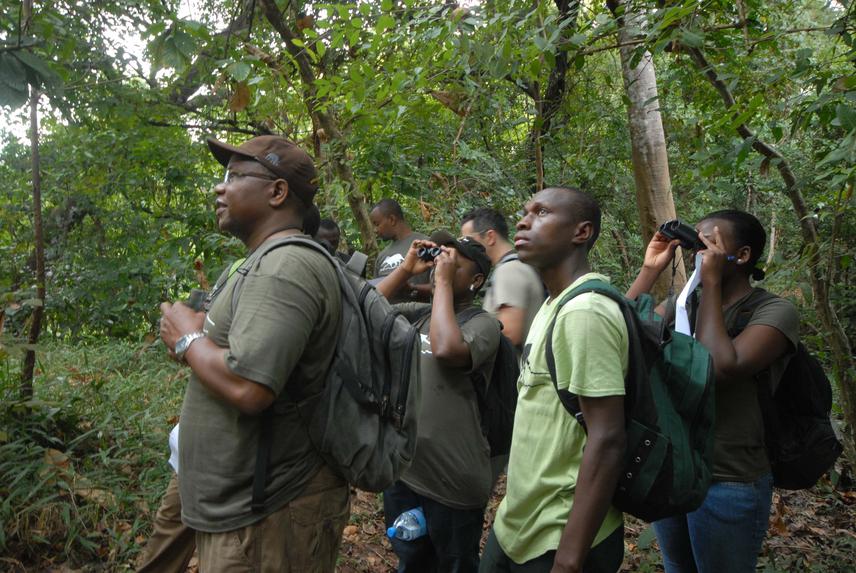Francesco Rovero
Other projects
12 Sep 2002
Conservation Biology of the Udzungwa Red Colobus and the Sanje Mangabey in the Udzungwa Mountains, Tanzania
20 Mar 2012
Boosting Local Capacity for Ecological Monitoring: Long-Term, Integrated Research and Conservation Programme in the Udzungwa Mountains, Tanzania
2 Dec 2015
Udzungwa as a Model for Standardized Research and Monitoring of Biodiversity in Tanzania: Completing a Long-Term Capacity Building Programme
The project aims to contribute to ecosystem protection in the Udzungwa Mountains National Park by establishing a biodiversity monitoring programme that effectively involves rangers and the local communities.

The Udzungwa Mountains host exceptional levels of biodiversity. Whilst part of the mountains is protected by the Udzungwa Mountains National Park (UMNP), the area lacks an effective biodiversity monitoring programme. Yet, monitoring and assessment of biodiversity, identification of threats and prioritisation of sites are key elements of effective protected area management. Without quantitative measures on biodiversity status and threats, both park management and community conservation initiatives cannot be evaluated objectively. Because of the importance of local empowerment and long-term implementation of any monitoring effort, the involvement of the local community can greatly enhance the long-term sustainability of monitoring efforts.
This project aims to contribute to ecosystem protection in the UMNP by establishing a biodiversity monitoring programme that effectively involves rangers and the local communities. The applicant helped UMNP establish the Udzungwa Ecological Monitoring Centre (UEMC) in 2006, a facility dedicated to strengthening ecological monitoring capacity. The UEMC and the long-term collaboration established with the park authorities will insure project success and sustainability. Rangers and village scouts will be trained on data collection and the first 6 months of data collection will be jointly conducted with the Project Team and carefully evaluated.
To be effective, monitoring has to be simple, cheap and replicable. The monitoring activities chosen will be in line with these requirements, and altogether are designed to provide a comprehensive set of data on the status of the biodiversity (1. large mammals, 2. forest flagship species, 3. human impact):
1) Transect routes, 6 km-long, along pre-defined trails to count signs and sightings of medium to large mammals. These will be conducted by two trained rangers 6 km-long from each of five ranger posts.
2) Focal group follows of semi-habituated groups of Sanje mangabey (Cercocebus galeritus sanjei) in Mwanihana forest; this is a strictly endemic, endangered monkey and the flagship species of the Udzungwa Mountains. Demography data will be collected regularly.
3) Transects to record human disturbance in forest sites (mainly tree and pole cutting, hunting, firewood collection), according to a simple protocol that has been successfully deployed in several forests of the Eastern Arc Mountains.